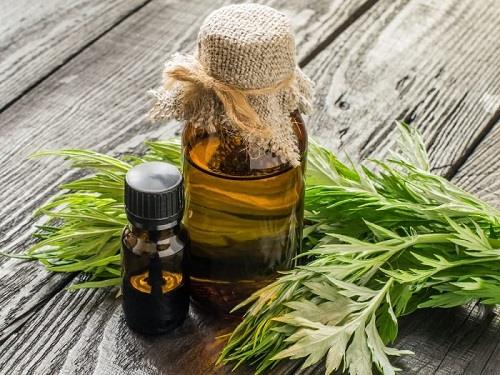Artemisia oil (Armoise oil) is obtained by steam distillation of the herb
Artemisia herba-alba Asso (Asteraceae) that grows wild in Northern Africa,
mainly in Morocco, which produces ~30 t/yr, 70% of worldwide demand. It is
a light yellow to yellow liquid with a light herbaceous odor characteristic of
thujone.
d
2525 0.917–0.935; n
20D 1.4600–1.4720; α
20D ?25° to ?8°.
The major components of artemisia oil are the ketones camphor (15–40%) and α- and β-thujone (together 70–25%). Since A. herba-alba
exists as various chemotypes, the composition of the oil may vary widely.
Artemisia oil is used in fairly large amounts in fine fragrances (e.g., for chypre notes).

Found in the plant Artemisia absinthium L.
By steam distillation of A. absinthium L.
Extractives and their physically modified derivatives. Artemisia, Compositae.
Essential oil composition
The chief constituent of artemisia is thujone.
Artemisia argyi has high medicinal value, and this medicinal value is mainly reflected in the essential oil. Take a bath with mugwort leaves in water to repel mosquitoes and disinfect in summer. It has a unique smell, fresh and natural. Mugwort Oil is a volatile aromatic substance extracted from the leaves and stems of wormwood by extrusion and solvent extraction. The efficacy of Mugwort Oil is more than 70 times that of this plant. When used in conjunction with moxibustion, it can enhance the sense.
The main functions of Mugwort Oil: Regulate Qi and blood, warm meridians, dispel cold and dampness, relieve pain, antibacterial, anti-inflammatory, stimulate digestive glands, relieve cough and reduce phlegm, promote circulation, invigorate Qi, and enhance immunity.
Moderately toxic by
ingestion. An allergen. Habitual users
develop “absinthtsm” with tremors, vertigo,
vomiting, and hallucinations. May cause a
contact dermatitis. When heated to
decomposition it emits acrid smoke and
irritating fumes